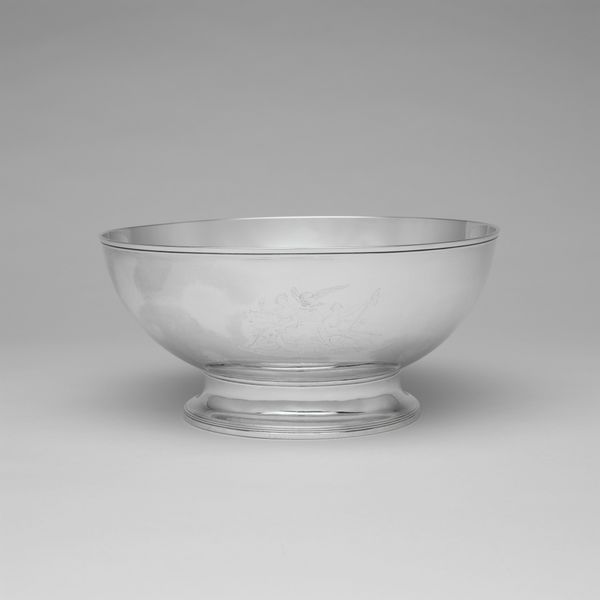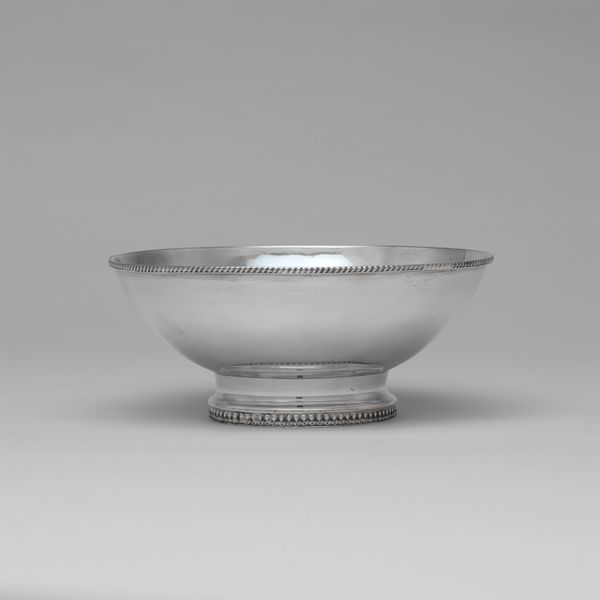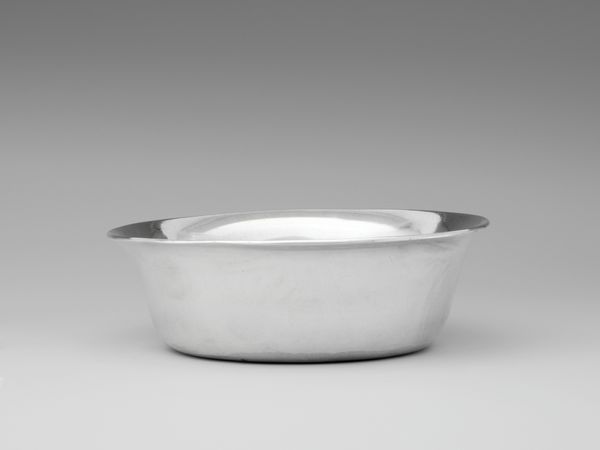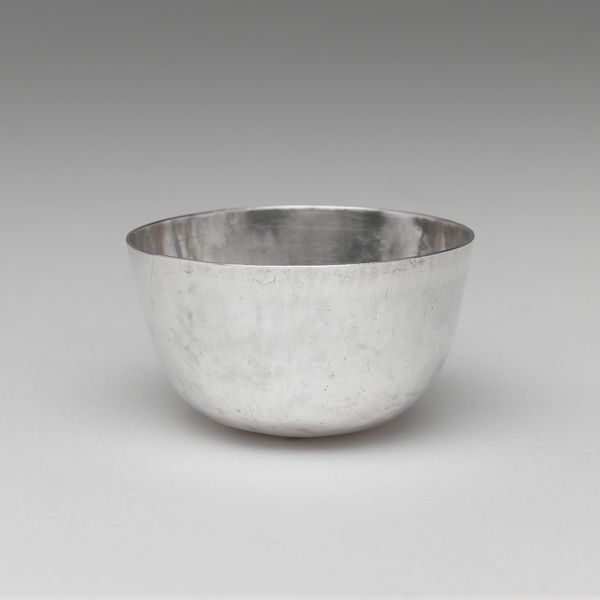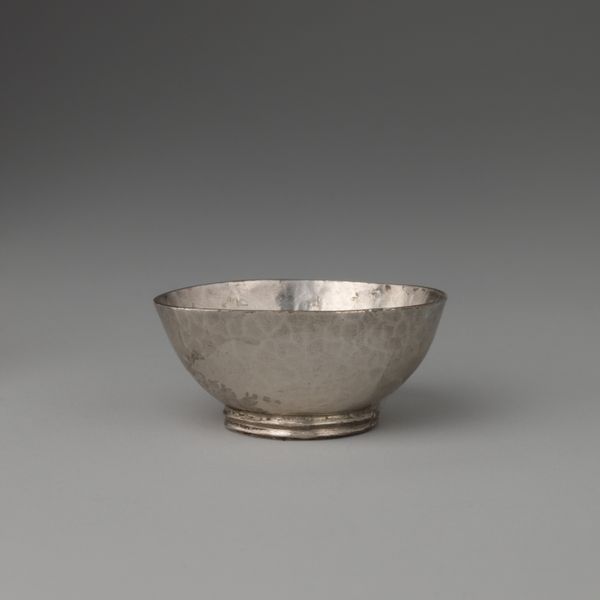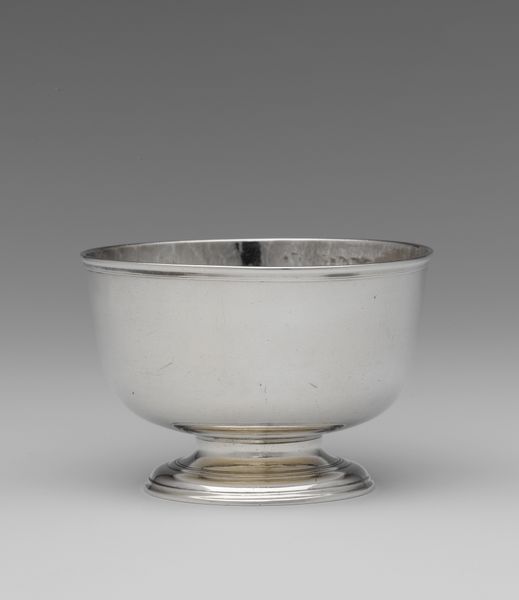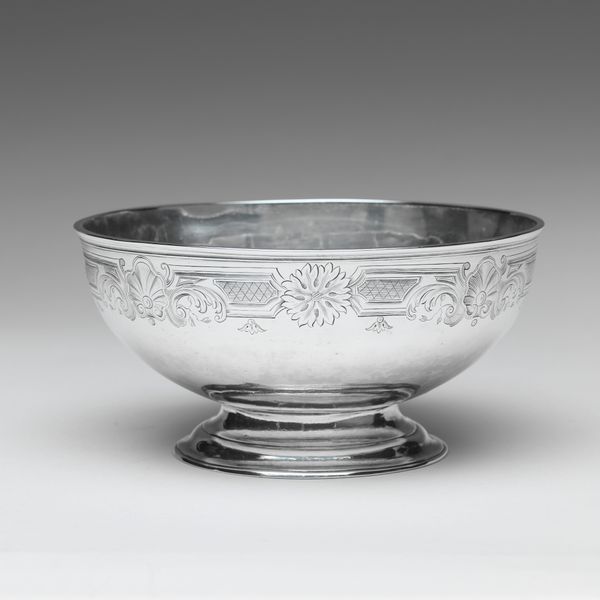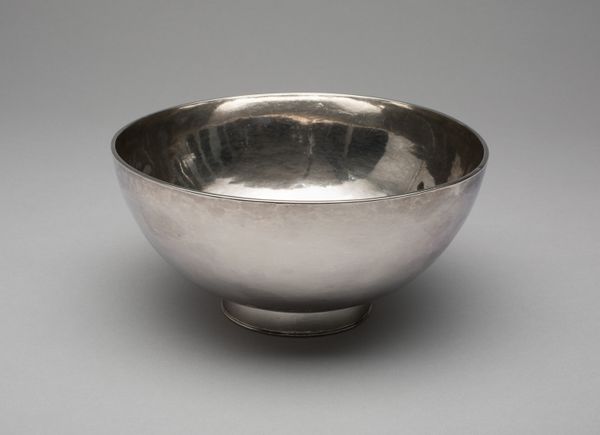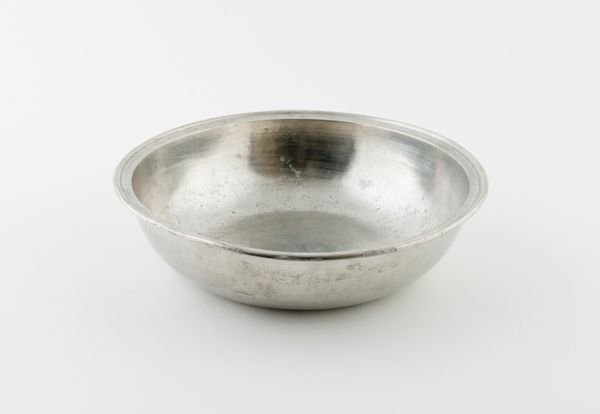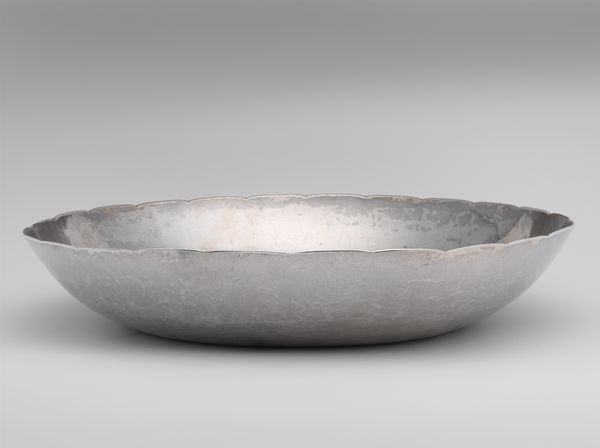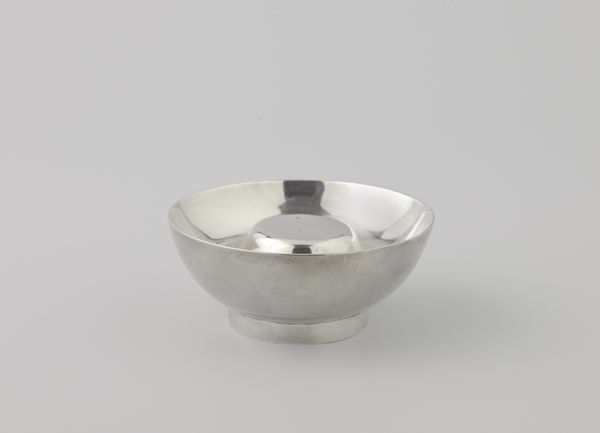
silver, metal, photography
#
silver
#
metal
#
photography
#
classicism
#
decorative-art
Dimensions: Overall: H. 3 5/8 in. (9.2 cm); Diam. 7 7/8 in. (20 cm); 17 oz. 14 dwt. (550.2 g) Base: Diam. 4 11/16 in. (11.9 cm)
Copyright: Public Domain
Curator: Before us, we have "Punch Bowl," an elegant example of late 18th-century silver craftsmanship, created sometime between 1785 and 1800 by Ephraim Brasher. You can currently find it here at the Metropolitan Museum of Art. Editor: It’s surprisingly stark, isn’t it? That unadorned surface reflecting the light, feels almost...clinical in its simplicity. It stands in stark contrast to the excesses usually associated with punch bowls, doesn’t it? Curator: It certainly invites closer inspection. Think about the social function of punch in that era. Its consumption wasn't a solitary act; it was deeply intertwined with sociability, community, and, of course, power dynamics. Editor: Absolutely, the era and context must always be taken into consideration. Silver pieces such as this are often reflective of a certain kind of political climate. Who was allowed at the parties to use pieces such as this one and how do gender roles play a part in it, if at all? Were there many people of colour using the bowl? Probably not. It does speak volumes, even with such minimalist features. Curator: And that leads me to think about the craftsmanship involved, of course. Silver was a precious material, its value linked to global trade networks, sometimes even exploitative colonial practices. This bowl embodies wealth, status, and the control over resources that underpinned those realities. How does that influence how you feel when observing it? Editor: It highlights the power inherent in decorative objects, often underestimated within art history. By questioning its social meaning we understand that art, even in a form like this, can perpetuate both exclusivity and social power. Curator: Precisely. This 'simple' bowl really encourages us to question beyond aesthetics, offering critical insights into societal norms and power structures from that era. Editor: Looking at it now, I notice its unsettling silence—what was once considered decoration has now taken on layers of unintended meanings through both a social and political context. Curator: Indeed, art pieces of past centuries were born under complex societal frameworks, now prompting contemplation regarding who gets a place at the table, or, rather, in front of the punch bowl.
Comments
No comments
Be the first to comment and join the conversation on the ultimate creative platform.
